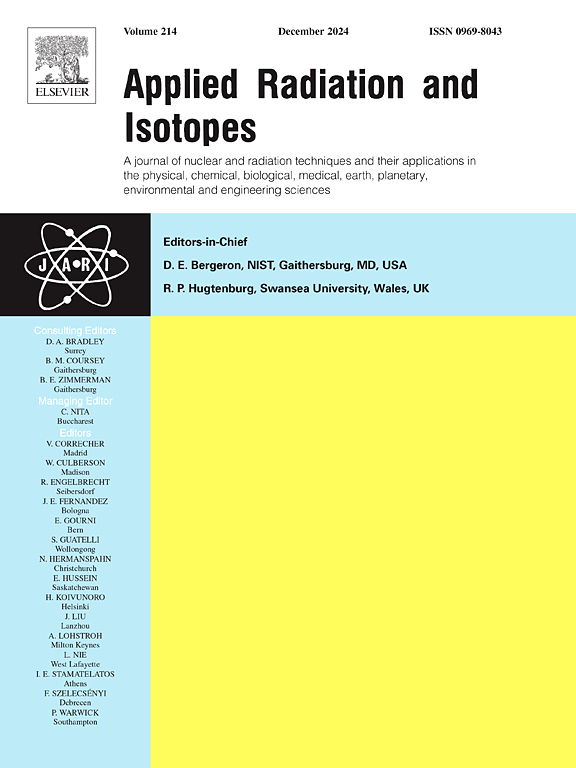Characterization of material using dual-energy gamma-ray tomography: Determination of atomic number and density
IF 1.6
3区 工程技术
Q3 CHEMISTRY, INORGANIC & NUCLEAR
引用次数: 0
Abstract
This study presents a new mathematical model for determining the atomic number and density of materials using dual-energy gamma-ray transmission tomography. The proposed method is based on an algebraic function that relates the atomic number to the attenuation ratio, offering an innovative approach for the precise characterization of materials. The methodology employed involved the theoretical development of the model, followed by tests using data from NIST XCOM and practical experiments with a gamma-ray transmission tomograph using americium-241 (59.5 keV) and cesium-137 (662 keV) sources. Two sets of materials were used: one group of 10 elements for determining the calibration curves and another with 4 elements (graphite, magnesium, aluminum, and iron) for validating the theoretical and experimental calibration curves. Unlike existing methods, which predominantly utilize polynomial or exponential relationships, the proposed model introduces a novel algebraic approach to enhance accuracy and computational efficiency. The performance of the new model was compared with approaches used by other authors. The analyses were conducted for elements with atomic numbers between 6 and 30, covering a significant range of materials of practical and scientific interest. The results demonstrated that the proposed model presented discrepancies of less than 3.5% for the atomic number and a maximum error of 10.04% for the density, with a trend of decreasing errors as the atomic number increased.
求助全文
约1分钟内获得全文
求助全文
来源期刊

Applied Radiation and Isotopes
工程技术-核科学技术
CiteScore
3.00
自引率
12.50%
发文量
406
审稿时长
13.5 months
期刊介绍:
Applied Radiation and Isotopes provides a high quality medium for the publication of substantial, original and scientific and technological papers on the development and peaceful application of nuclear, radiation and radionuclide techniques in chemistry, physics, biochemistry, biology, medicine, security, engineering and in the earth, planetary and environmental sciences, all including dosimetry. Nuclear techniques are defined in the broadest sense and both experimental and theoretical papers are welcome. They include the development and use of α- and β-particles, X-rays and γ-rays, neutrons and other nuclear particles and radiations from all sources, including radionuclides, synchrotron sources, cyclotrons and reactors and from the natural environment.
The journal aims to publish papers with significance to an international audience, containing substantial novelty and scientific impact. The Editors reserve the rights to reject, with or without external review, papers that do not meet these criteria.
Papers dealing with radiation processing, i.e., where radiation is used to bring about a biological, chemical or physical change in a material, should be directed to our sister journal Radiation Physics and Chemistry.
 求助内容:
求助内容: 应助结果提醒方式:
应助结果提醒方式:


